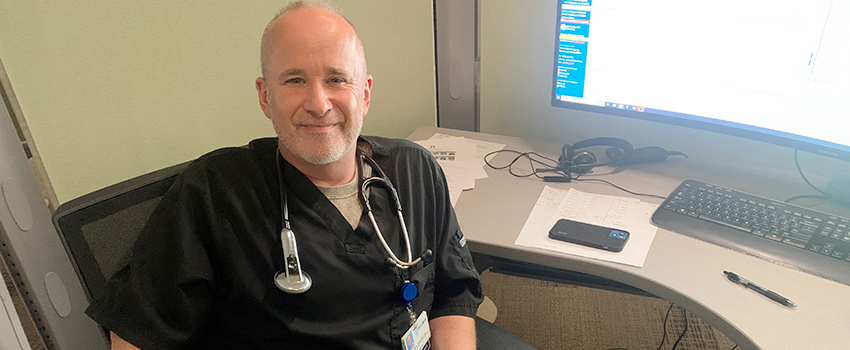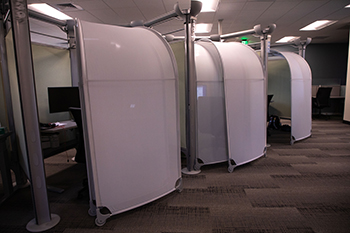New St. Luke's telehealth roles allow collaboration to admit patients efficiently

As telehealth continues to be a vital part of everyday health care, finding ways to improve how care is provided through it is an ongoing process.
At St. Luke’s, one of the ways telehealth has been utilized to solve a previously frustrating problem is through roles implemented this past spring.
With three hospitals located in the Treasure Valley in Boise, Meridian and Nampa, it still wasn’t always clear which hospital may have more bed capacity at a given moment. It took a few calls, and in a health emergency, time is of the essence.
Since March, a rotating group of about 10 hospital medicine doctors have helped fulfill the virtual admitter role, centered at St. Luke’s Virtual Care Center. The role allows them to see not only where a patient could be transferred to get the best care in an expedited manner, but also can expedite admission by virtually staffing patients admitted by nurse practitioners or physician assistants.
"In the emergency department and hospital, there is no schedule, it’s very unpredictable," said Dr. Adam Balinger, who has lead the creation of the role. "So, having one person who can have this view of all three hospitals lets us offload some of the admissions to have them be seen more quickly and thus maintain the best care possible that our providers can give."

The virtual admitter is also aided by another new role in development, the patient flow supervisor, a role that will be filled by administrative supervisors from the three Treasure Valley hospitals.
“Their role in partnering with us is vital, because their administrative supervisor partners are on the ground there and can tell us where there is bed and staffing capacity in real time,” Balinger said. “I know what the patient needs in terms of medical care, but they can tell me if there’s a bed shortage or a nursing shortage and thus where to admit the patient to avoid delays in care.”
Caroline Davis, a nurse and project manager, cites a past example of an 84-year-old patient with heart block that sought care at the Fruitland emergency department. It took nearly 10 calls to place him, taking approximately 2 hours, 15 minutes. The team anticipates much shorter time to transfer with these new roles in place.
“There’s this great energy and attention and drive to what needs to happen,” Davis said, noting the transfer center also plays a crucial part. “The (roles) tie in together so well … they help give more global understanding of patient flow.”
Davis said one goal of the roles being intertwined is to collect data to hopefully inform future decisions and lead to new ways to be efficient managing capacity. The need was put into light during the COVID-19 pandemic surges.
Dr. Alexis Shanahan served the virtual admitter role during its first week live back in March.
“I was able to coordinate with specialists to create and implement a plan of care for transferring patients prior to their arrival,” she said. “I was able to do the same with several direct admissions from clinic, saving patients costly and time-consuming (emergency department) visits. Feedback was universally positive, even from those providers who were skeptical at first. Rounding hospitalists were able to spend less time on the phone and more time focused on timely discharges, in-person evaluation and care coordination. Admitting providers were able to focus on taking care of the sickest patients.”
For St. Luke’s, leveraging technology to help patients get the best care possible at the best place possible, as soon as possible, while also allowing doctors to focus on them sooner, it’s a win-win.
“It’s a single call to figure where a patient needs to be admitted both in terms of patient care need and bed and staffing availability. We cut down the time needed for a patient to receive a higher level of care and avoid delays of care,” Balinger said. “Using telehealth lets us promptly cover a large area to provide expertise to get a patient admitted where there is capacity so the patient is not waiting to receive care.”
About The Author

Dave Southorn works in the Communications and Marketing department at St. Luke's.




